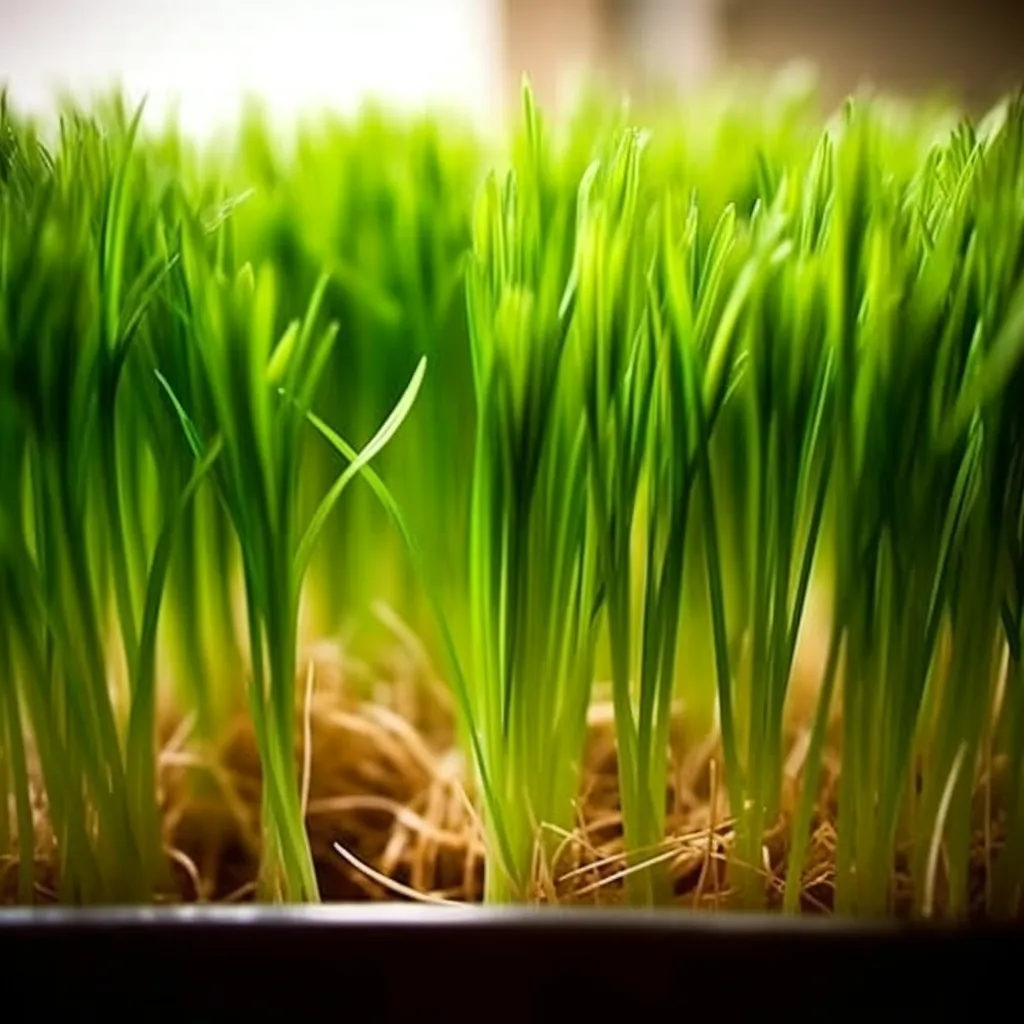Story of Day :
Contents
The Complete Guide to Wheatgrass Plant: Care Tips and Benefits
Wheatgrass is a type of grass that belongs to the wheat family.
It is a popular plant used for juicing, as it contains many essential vitamins and minerals.
Wheatgrass has also gained popularity in recent years due to its various health benefits.
What is Wheatgrass?
Wheatgrass is a young wheat plant that grows from the wheat kernel.
It typically grows around 7-10 inches tall and has long, slender leaves with pointed tips.
The leaves are bright green in color and have a slightly sweet taste.
Benefits of Wheatgrass

- Nutrient-rich: Wheatgrass contains high amounts of vitamins A, C, E, K as well as iron, calcium and magnesium.
- Digestion: The high fiber content in wheatgrass promotes healthy digestion by stimulating bowel movements.
- Cleansing: Due to its detoxifying properties, wheatgrass helps eliminate toxins from the body and purifies blood cells.
- Skin care: Applying wheat grass juice topically can help alleviate skin problems such as acne or eczema due to its anti-inflammatory properties.
Growing your own Wheat Grass
Growing your own wheat grass at home is easy! Here are some simple steps you can follow:
- Select an ideal growing spot: Choose a sunny area with good drainage where you plan on placing your seeds or tray filled with soil mixture for growing indoors
- Prepare the soil and seeds: Fill a tray with potting soil or use a blend of peat moss, vermiculite and perlite.
Add wheatgrass seeds and cover them with a thin layer of soil.
- Watering: Keep the soil moist by watering it regularly but avoid overwatering, as this may lead to mold growth.
- Sunlight: Place your trays in an area that gets plenty of sunlight or under grow lights if you are growing indoors.
- Harvesting Wheat Grass: Wait until the wheat grass reaches a height of six inches before harvesting.
Cut the grass using sharp scissors right above the roots.

Care Tips for Wheat Grass
To ensure your wheat grass grows healthy:
- Fertilizer: Wheatgrass requires nitrogen-rich fertilizer for optimum growth, add some compost to your potting mix while planting.
- Pests:Keep an eye out for pests such as aphids that can damage your crops by spraying neem oil to keep them away from spreading .
- Maintain Sunlight Exposure: Wheatgrass requires at least 6 hours of direct sunlight daily , be sure to keep it under sunlight or grow lights for indoor planting.
- Water: Water your wheatgrass regularly, but avoid overwatering as this may cause mold growth.
Culinary uses of Wheat Grass

Wheatgrass is a versatile plant that can be used in many culinary dishes.
Here are a few ideas:
- Smoothies and juices: Add wheat grass to your smoothie or juice to give it an added nutritional boost.
- Soups and salads: Chop up some wheat grass and add it to your favorite soup or salad recipe.
- Bread making: Add finely chopped Wheatgrass leaves into the dough while kneading or use dried powder as a replacement for wholewheat flour while baking breads and pastries.
In Conclusion,
Growing and caring for wheatgrass is easy, with numerous benefits that make it a worthwhile addition to any garden.
Follow these simple tips on growing, harvesting, care tips ,and culinary uses of Wheat Grass at home for optimum yield.
Incorporating Wheat grass into your daily diet will definitely benefit you in the long run both physically and mentally!
.


